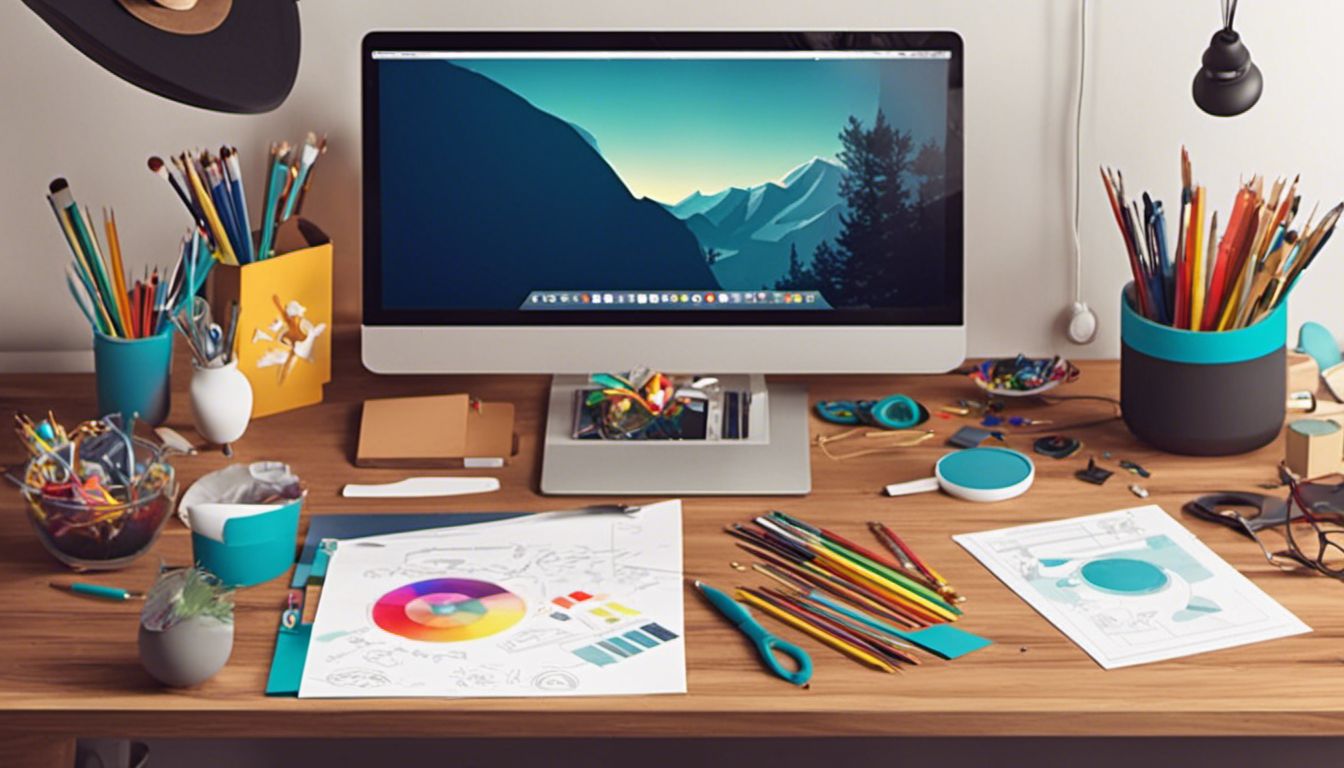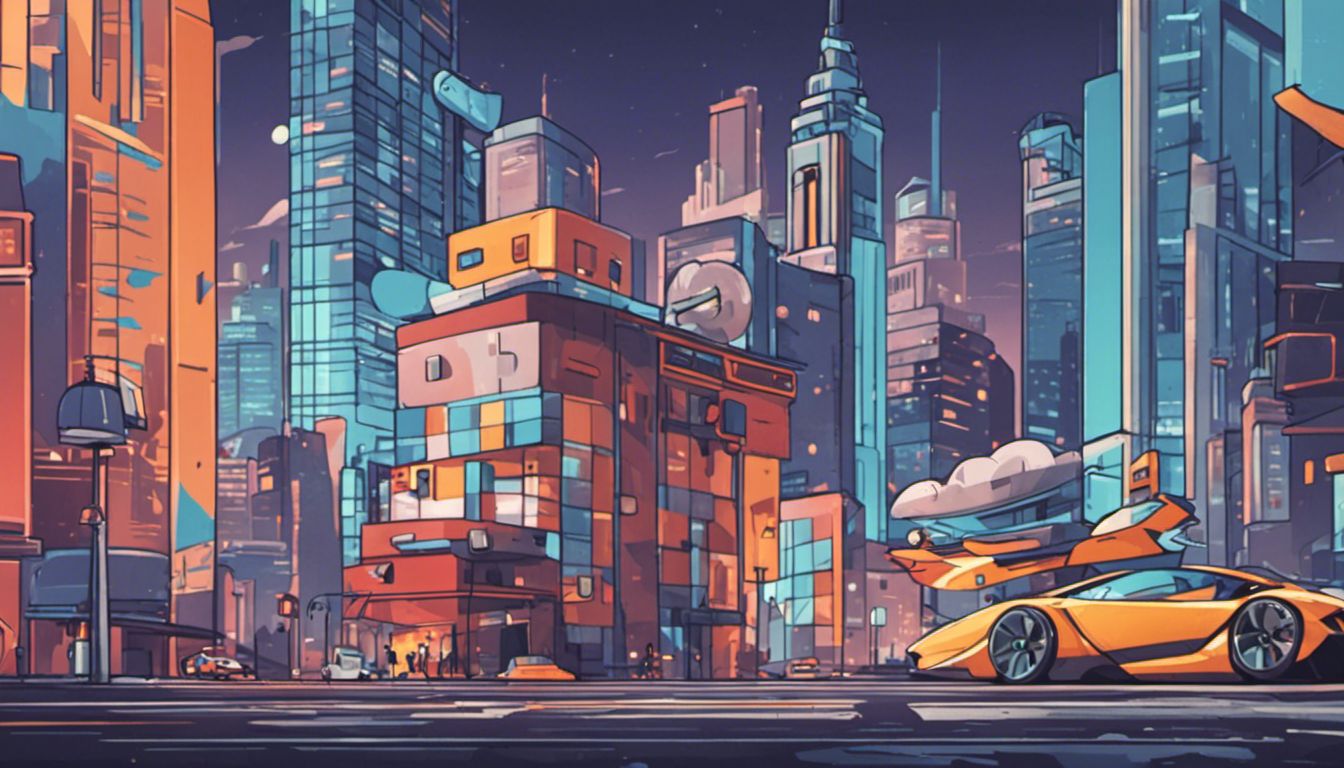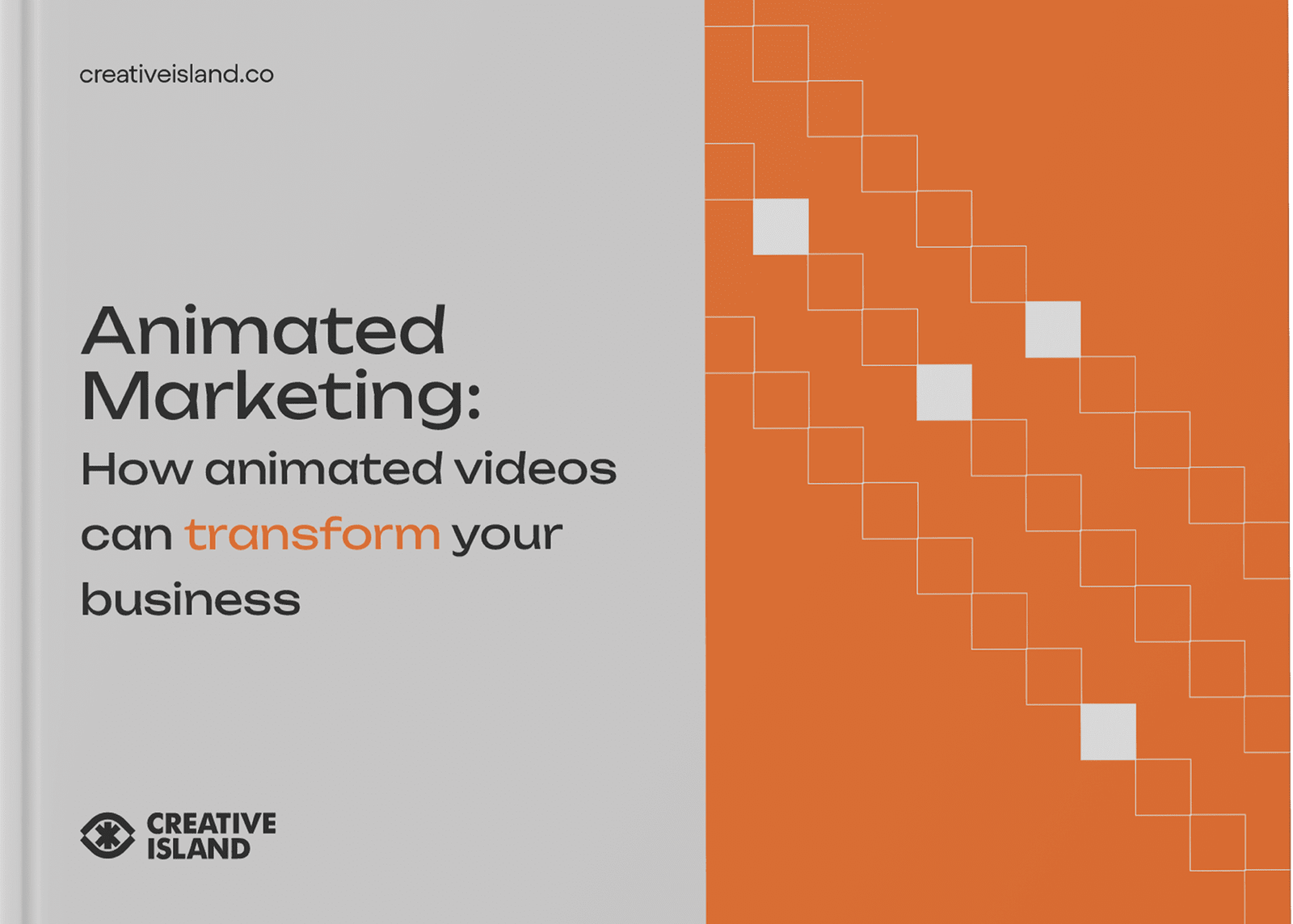

Deciding between 2D or 3D animation for your next project can be quite challenging. With the general belief that creating 3D animation costs a lot more than its 2D counterpart, budget constraints can limit choices.
This blog post aims to break down the various cost factors involved in both styles of animation, providing you with valuable insights to make an informed decision. Ready to explore the world of animation and find out which one is easier on your pocket?.
Key Takeaways
- 3D animation is generally more expensive than 2D animation due to factors such as complexity, timeline, characters, design, extra effects, and qualifications.
- One of the reasons why 3D animation costs more is because it requires advanced skills and specialized software.
- On the other hand, 2D animation costs less and has a simpler process compared to 3D animation.
- While creating realistic visuals is easier with 3D animation, 2D animation offers more creative freedom and unique art styles.
Differences Between 2D and 3D Animation Cost


The cost of 3D animation is higher compared to 2D due to factors such as complexity, timeline, characters, design, extra effects, and qualifications.
Complexity
3D animation is more complex than 2D. This makes the work harder and costs higher. Every part of a 3D model needs detailed design, from shapes to textures. It also calls for advanced skills in using software.
In 2D animation, each frame gets drawn by hand or with simpler software tools. This makes it less complex and cheaper to make.
Timeline
Creating a 3D animation takes less time than making a 2D one. This is because in 3D, models can be used again and again. In contrast, with 2D animation every frame has to be drawn by hand.
This makes the timeline for 2D work longer compared to creating a 3D project.
The time needed to make an animation also adds to the cost of the project. More time spent on drawing means more money spent as well. Therefore, even though making 3D models at first may take some extra hours, in the long run they save both time and resources since they can be reused.
Characters
In both 2D and 3D animation, characters are key. For a 3D character, more work is needed. You have to model the character first. Then you need to add textures and colors to it. This process can cost more than making a simple vector character in 2D animation.
But, once a 3D model is done, it can be used again and again. It changes its pose or moves around easily with no need for extra drawing every time. So, while a 3D character may seem costly at start, it really can save money in the long run if that same model gets used many times over.
Design
Design can change the cost of both 2D and 3D animation. In 2D, you draw and colour each frame for your character. It takes a lot of time but gives many styles to pick from. For 3D, you build one model of your character first.
You use it again and again in other scenes. But if your design is complex, you need more computer power to show it well which increases costs too. Yet the result can be very real-looking characters moving in space that give viewers a ‘wow’ feeling!
Extra effects
Extra effects bring more life to both 2D and 3D animation. In 3d animation, these extra bits can make things look real. But this comes with a cost. High skills are needed to add these details in 3d models.
Sometimes, the price goes up because of this work. Some jobs need more care, others less. The animator’s skills play a big role here too.
Qualifications
To make 3D animation, you need skilled animators. Good training is also a must. This is because the work in 3D animation is very hard. It needs more skill than 2D animation. One reason why 3D costs much more than 2D is this.
The use of expensive software adds to the cost too. To work with these tools, an animator must have strong skills and good knowledge. So, experts in the field often ask for higher pay to do this kind of job.
Pros and Cons of 2D Animation


Lower cost
2D animation costs less than 3D. It’s cheaper to produce and it takes less time. You use fewer resources and don’t need as many high-end tools. The software for 2D animation isn’t as costly, which makes it a good choice if you want to keep expenses down.
An animator can create beautiful scenes without forgetting about the budget. Saving money is key in any project, so this benefit often makes people choose 2D over 3D.
Simpler process
2D animation offers a simpler process compared to 3D animation. With 2D, animators can create their designs by drawing frame by frame. This eliminates the need for working with complex 3D objects or models.
The simplicity of the process allows for faster production times and lower costs. Additionally, 2D animation software is often more accessible and requires less advanced skills compared to 3D animation software.
Overall, the simpler process of 2D animation makes it a cost-effective choice for many projects.
More creative freedom
In 3D animation, there is more creative freedom compared to 2D animation. With 3D animation, you can create realistic visuals and bring your characters and objects to life in a three-dimensional space.
This allows for more dynamic and immersive storytelling. You have the ability to rotate characters and objects in 3D, adding depth and realism to your animations. On the other hand, 2D animation allows for unique and stylized visuals with its flat and cartoonish nature.
This gives animators the freedom to experiment with different art styles and create visually distinctive animations that stand out. So whether you prefer the realism of 3D or the artistic flexibility of 2D, both styles offer their own benefits when it comes to creative expression in animation.
Less realistic
2D animation is often chosen for its stylized and artistic feel, but it may not be the best choice if you’re looking to create a highly realistic animation. Unlike 3D animation, which can create lifelike visuals, 2D animation relies on hand-drawn or computer-generated images that can’t always achieve the same level of detail and realism.
This limitation in realism is due to the nature of the medium itself, as 2D animation focuses more on style and expression rather than creating an exact replica of real-life objects or characters.
While 2D animation has its own unique charm and appeal, it may not be suitable for projects that require a high level of realism.
Pros and Cons of 3D Animation
3D animation requires advanced skills and offers realistic visuals, but it comes with higher costs and longer production timelines.
Higher cost
3D animation generally costs more money than 2D animation. This is because creating 3D models and working with advanced software requires more resources, which can drive up the cost.
Additionally, the production time for 3D animation is usually longer compared to 2D animation. While 3D animation may result in visually realistic and dynamic visuals, it comes with a higher price tag.
More advanced skills required
Creating 3D animation requires more advanced skills compared to 2D animation. In addition to drawing and designing characters, animators working in 3D must also have expertise in rigging.
Rigging involves creating a digital skeleton for the characters and objects, allowing them to be animated realistically. This requires interdisciplinary knowledge and proficiency with specialized software.
The rise of 3D animation has increased the demand for animators with these advanced skills in the industry, as it offers more realistic visuals and allows for greater creative possibilities.
Realistic visuals
3D animation is known for its ability to create more realistic and three-dimensional visuals. Unlike 2D animation, which tends to be stylized and flat, 3D animation can make characters and objects look lifelike.
This realism is achieved through the use of advanced software and techniques that allow animators to model characters in 3D space, giving them depth and dimension. As a result, the final animation often looks more appealing and visually impressive compared to 2D animation.
With its ability to provide greater realism and flexibility, it’s no wonder that 3D animation is considered the go-to choice for creating visually stunning animated content.
Longer timeline
3D animation typically takes more time to produce compared to 2D animation. This is because creating 3D models and animating them requires more effort and resources than drawing a 2D cartoon.
The production process for 3D animation involves modeling the characters, texturing them, and then animating their movements in a three-dimensional space. On the other hand, 2D animation can be completed relatively quickly as it involves drawing frames one by one.
So if you’re looking for a faster turnaround time, 2D animation might be a better option for you.
Conclusion
In conclusion, while both 2D and 3D animation can be expensive, generally speaking, creating 3D animation tends to be more costly than producing 2D animation. This is because 3D animation requires specialized software and hardware, along with the time and resources needed to create and render detailed 3D models.
However, the cost of animation ultimately depends on factors such as complexity, storyline, desired quality, and available budget. It’s important to consider these factors when deciding between 2D or 3D animation for a project.
FAQs
Is 3d Animation More Expensive Than 2d?
The cost of animation depends on various factors such as the complexity of the animation, the style of your animation, and the animation technique used. Generally, 3D animation is considered to be more expensive than 2D animation because it involves working with 3D objects and requires additional skills and resources.
What is the difference between 2d and 3d animation?
The main difference between 2D and 3D animation lies in the way the animation is created. In 2D animation, the characters and backgrounds are created on a two-dimensional plane, giving it a flat, cartoony look. In 3D animation, the characters and objects are created in a three-dimensional virtual space, which allows for more realistic and dynamic movements.
Are there any advantages of using 3d animation over 2d animation?
Yes, there are several advantages of using 3D animation over 2D animation. 3D animation allows for more realistic and detailed visuals, it can create a sense of depth and immersion, and it can be easier to get the ‘wow’ factor. Additionally, 3D animation allows for more complex and dynamic movements, making it suitable for certain types of projects.
Do I need to be a skilled animator to create a 2d animation?
While having animation skills certainly helps, there are now a variety of software tools and resources available that allow even beginners to create 2D animations. You don’t necessarily need to be a skilled animator to create a basic 2D animation, but having a good understanding of the animation process and techniques can definitely improve the quality of your animation.
Is 2d animation still in demand?
Yes, 2D animation is still considered to be a popular and in-demand animation style. While 3D animation has become more prevalent in recent years, there is still a demand for 2D animation, especially in certain industries such as advertising, television, and web animation.
Which animation style should I choose for my project?
The animation style you choose for your project depends on various factors such as the nature of your project, your target audience, your budget, and your personal preference. It is important to consider the complexity of the animation you want to achieve and settle on what’s best for your project.
Is 2D animation cheaper than 3D animation?
Yes, in general, 2D animation is considered to be relatively cheaper than 3D animation. This is because 2D animation can be created using traditional hand-drawn techniques or digital software tools, whereas 3D animation requires additional software, hardware, and specialized skills.
How can I create a 2D animation?
To create a 2D animation, you can use software tools such as Adobe Animate, Toon Boom Harmony, or even free options like Synfig Studio or Pencil2D. These tools allow you to create and manipulate characters and objects in a two-dimensional space, add motion, and create an animation sequence.
Can I use 3D elements in a 2D animation?
Yes, it is possible to incorporate 3D elements into a 2D animation. This technique is often referred to as 2.5D animation, where 2D characters or objects are placed in a 3D environment to create a sense of depth. It can add visual interest and enhance the overall quality of your 2D animation.
How do I decide between 2D or 3D animation for my project?
When deciding between 2D or 3D animation for your project, consider factors such as your budget, the desired visual style, the complexity of the animation, and the specific requirements of your project. Assess what’s best for your project and choose the animation technique that will help you achieve your desired outcome.

